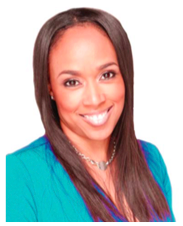
What are biases and stereotypes, and how can I resist them?
Do you know anyone who has received scathing comments because of their skin color? Perhaps they heard their co-workers say negative remarks, like they don’t deserve their job because of their race and ethnicity. Or perhaps they were blatantly avoided by other people, who didn’t take the time to listen to their ideas, inputs, and insights.
Such instances are common examples of a prejudiced society that the US contends with, even up to now. These stereotypes and biases are still deeply entrenched in daily interactions and conversations—they can even be subtle enough that you don’t know you’re encountering prejudice in the first place!
To combat discrimination, it’s important to understand that we are all diverse—recognizing individual differences based on race, gender, culture, religion, and other factors.
Let’s learn more about how we can combat prejudice by embracing diversity.
A Brief History
The 1960s saw the passage of the civil rights law, which aimed to provide equal opportunities for minorities and for women. However, despite this, minorities were still unable to gain equal footing with white men in the US—prejudice simply took subtle, less overt forms, which enabled institutions to remain all-white and all-male even after statutes strove to formally end discrimination.
This prompted succeeding courts and administrations – Republican and Democratic alike – to look for race- and gender-conscious remedies to combat discrimination. For instance, former President John F. Kennedy created a Committee on Equal Employment Opportunity, which pushed for affirmative action to actively fight prejudice in the workplace.
The succeeding years saw the emergence of important civil rights organizations that promoted equal rights for women and people of color. They were also marked with laws to further end discrimination, such as the Equal Pay Act, Discrimination in Employment Act, and Equal Employment Opportunity Act.
We are still in an uphill fight against bias and prejudice. Laws are being amended, even until th present, to protect other minorities, and to extend protection to workers in different working conditions.
What causes a biased society?
Yes, we must fight against prejudice and discrimination—but how can we, if we don’t know what they are? Let’s now take a look at two important factors that contribute towards a prejudiced society: stereotype and bias.
Stereotypes simply refer to generalized and oversimplified opinions or perceptions of a certain group of people. This means that, when someone who stereotypes encounters an individual who belongs to a certain group, they already assume the person to possess certain traits and qualities already ascribed to their group.
Bias, meanwhile, means a preference or inclination to a certain person or group. This goes actively against equality, as bias means exhibiting partiality in judgment. However, bias can be difficult to catch, as it is usually more subtle.
Now that we understand these two factors better, it’s time to learn how to transform these into acts of inclusiveness.
How can we avoid succumbing to bias and stereotyping?
We grow up learning to place people and objects into categories. Influenced by different factors – our parents, peers, and media – our perceptions of different racial and ethnic groups are shaped, resulting in unintentionally labeling some groups as superior to others. This is what we call baggage.
By constantly monitoring our thoughts when we encounter someone with a different skin color, or someone who identifies as gay, or someone with a disability, we can start to uncover what consists our baggage.
Every time this happens, let’s check for consistency and repetition. Are your reactions the same throughout each encounter? Do you have these assumptions even before you learn about the individual? If the answer is yes, then those may be stereotypes. What you should do, then, is to remind yourself that stereotypes are not valid indicators of who a person is—we should not box others’ characters, skills, and personalities based on preconceived notions about them.
Since stereotyping is a learned habit, we can certainly unlearn it with practice. However, remember to be kind to yourself during this process of unlearning—your thoughts are not actions. But hopefully, in time, you can learn not to have these thoughts in the first place!
Being self-aware is key towards teaching yourself to reject biases and stereotypes, and to embrace diversity. Try to see if you feel any discomfort with people being different, which hinders you from seeing them as fully human. With constant practice, you can learn to identify your thoughts and feelings, and filter them to help you change how you think of others.

